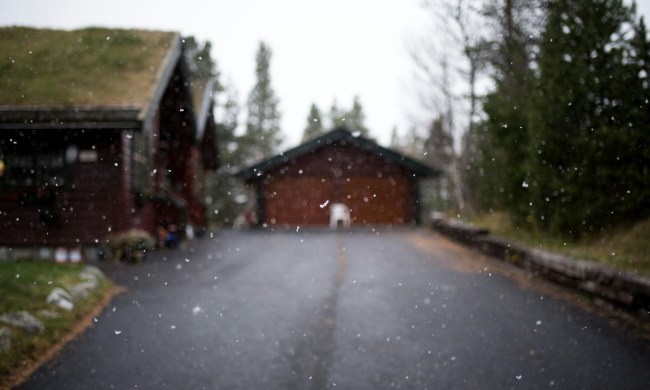When the weather turns cold, you want to be able to depend on the heating system in your apartment. While apartments tend to be smaller in square footage, heating them in colder weather isn’t necessarily easy. If you pay for your heat, heating your apartment might hike up your energy bill, as well. Depending on your apartment’s existing heating system, how well the walls and windows are insulated, and how warm you prefer your space, deciding on the best heating system can certainly be a complex process.
We’re going to dig into the best heating systems for your apartment so that you can be toasty warm in your home, even when the weather outside is frightful.
Space heaters
If you just want to heat up a smaller space or a single room without hiking up the heat in your whole apartment, a space heater is a great option. They are perfect if you live in a warmer climate and you just want to add a bit of warmth to the room you’re occupying. If you live in a colder climate, a space heater can also be beneficial as a way to lower your overall energy costs. You can lower the temperature in your home a bit and just heat a confined space to your comfort level.

Space heaters are great for heating up your bedroom when you’re snoozing, making your home office toasty while you’re working, or even warming up your living room while you enjoy a movie night. They are compact for easy storage, quick heating, and they can save you some cash by heating the small space you’re using instead of your entire apartment. There is even a bit of versatility in operating them as you can find both electric and gas-powered space heaters.
Central heating systems
A central heating system requires a complex installation of ducts, vents, or pipes in order to operate, but it distributes heat to every room in your apartment. Central heating is the best option if you live in an area where winters are extreme and freezing temperatures occur. Since these systems heat the entire house, you can ensure your water pipes don’t freeze, burst, and cause flood damage to your home. The two most common central heating systems use either a furnace or a boiler to accomplish heating your home.
Furnace
A furnace heats the air within it and then delivers the warm air throughout the home through a system of ducts. Vents are installed in every room of the house where the warm air is released to increase the room’s temperature. The vents are often installed lower on the walls or near baseboards so that the warm air can rise naturally and heat the room evenly. The benefit of a central heating system that uses a furnace is that it heats your home more quickly than other methods.
Boiler
Instead of heating air to distribute throughout your home, a boiler heats water that is then pumped through pipes installed throughout the home. The water is delivered to radiators installed in each room that heat their respective spaces. There are some great benefits to heating your home with a boiler. Water heating is more efficient and cost-effective than methods like air heating, and it doesn’t dry up the air in your home like furnace heating often does. If you tend to be bothered by dry air in the winter, a central heating system that uses a boiler is a great option for keeping you more comfortable.

Floor heating
If you want the most energy efficient and evenly distributing heating system available, floor heating is a great way to go. This system uses either water piping or electrical wiring beneath your floorboards to produce a comfortable level of heat from the ground up. This type of heating uses less overall energy since it doesn’t need to heat up to a very high temperature to give you a comfortable level of warmth. Traditional central heating systems that use a furnace, for example, need to heat up to high levels in the 100s in order to heat your home to a comfortable temperature. Floor heating, however, only needs to be heated to around 84 degrees in order to accomplish that comfortable room temperature.
While floor heating requires significant installation costs and effort, the ease of use and energy savings in the long run are worth it.
Which heating system is right for you?
Choosing the best heating system for your apartment boils down to the climate in your area, some specifics in your apartment’s layout, and your overall budget. The most traditional route for heating your home is a central heating system as it warms your entire home to your preferred temperature.
However, if you just want the freedom to lower your thermostat and heat a small and confined space, a space heater is a great option for you. If you want to opt for a pricier, yet more efficient heating system, floor heating may be the perfect solution.
Your apartment may be spacious or cozy, well insulated or a bit drafty, but you can find a heating system that is perfect for your needs.



